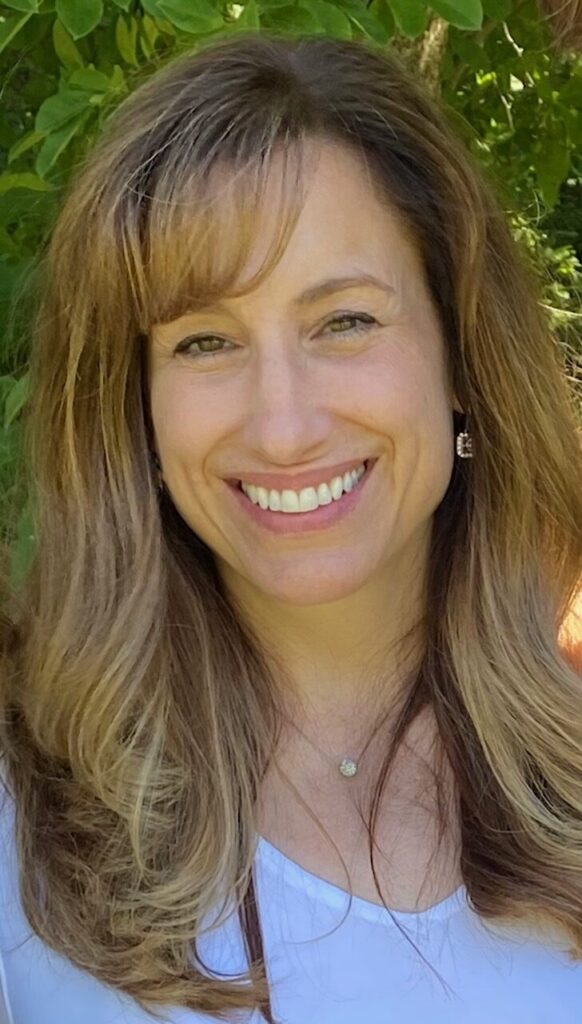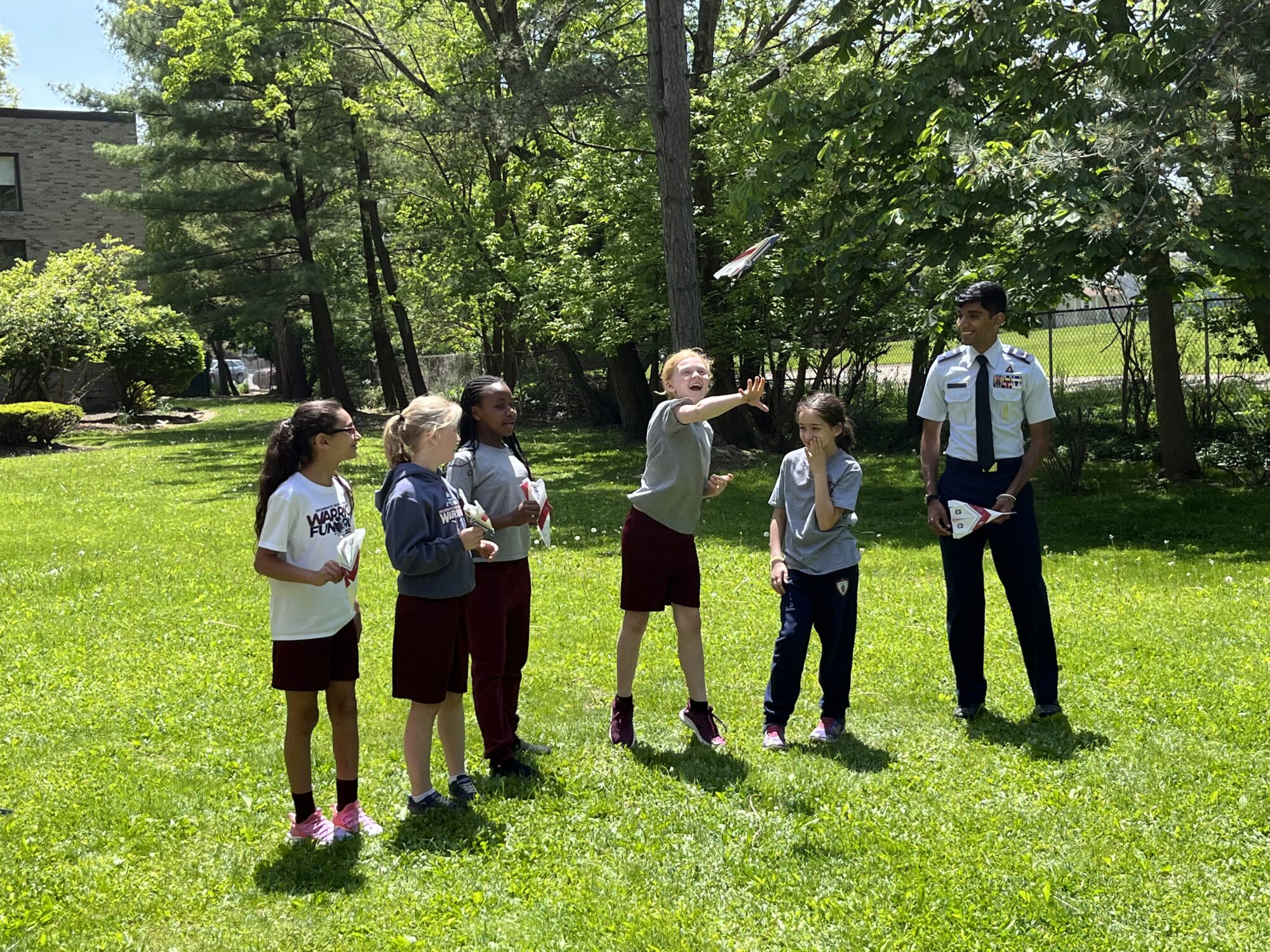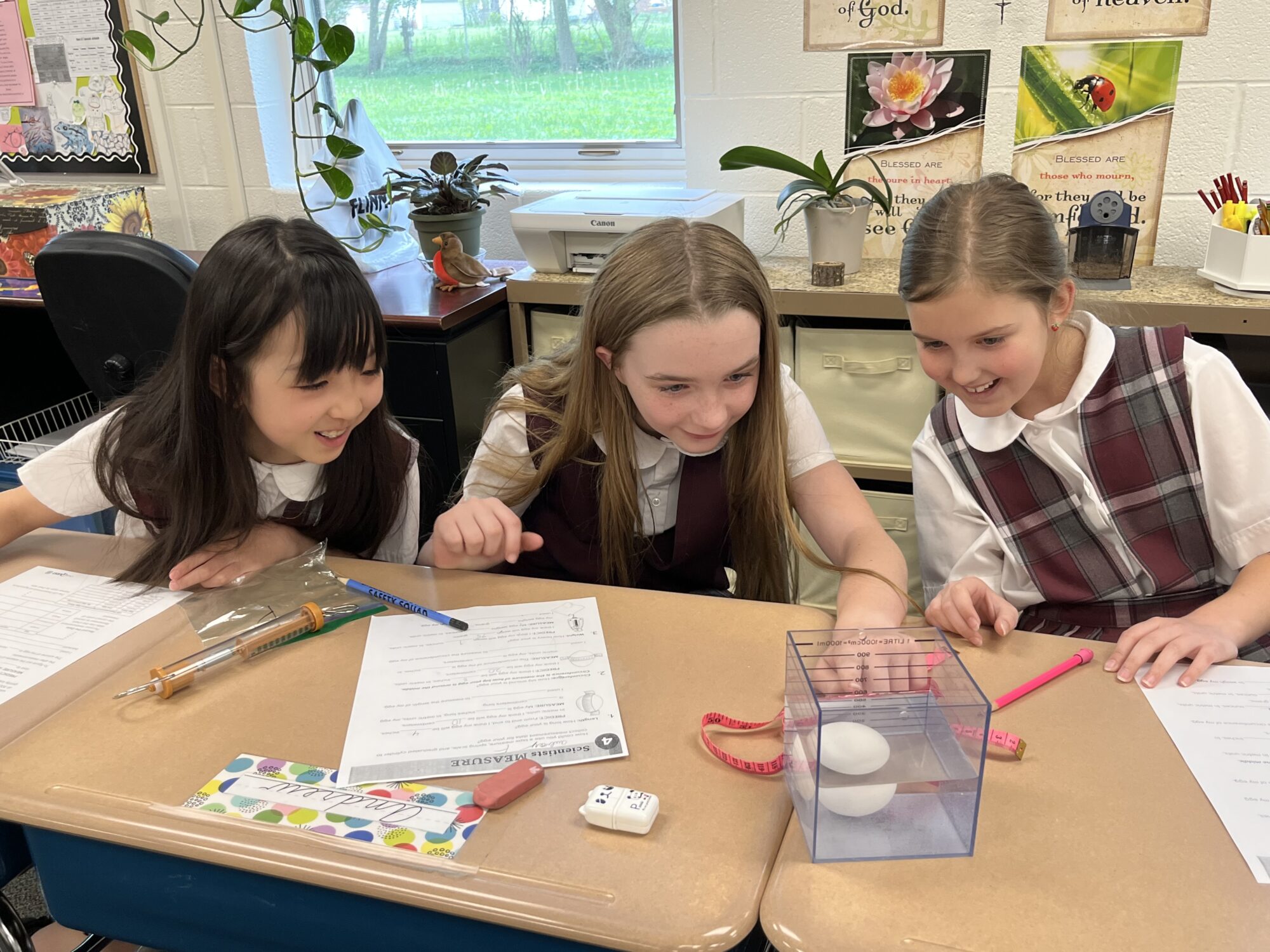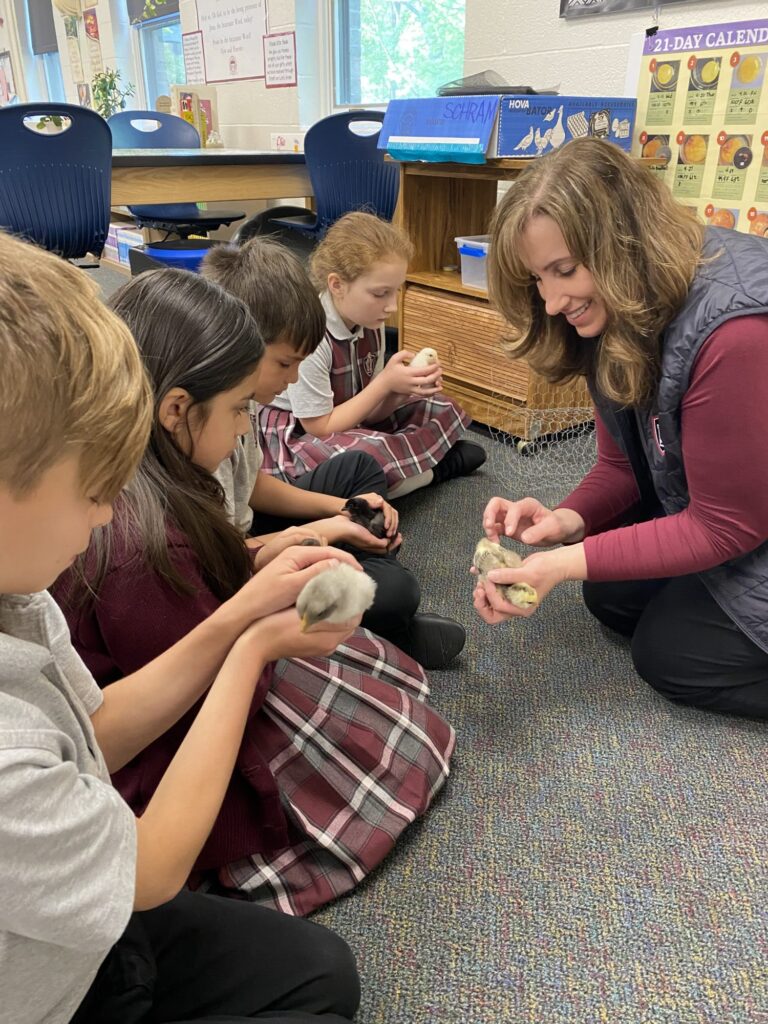“There are no ceilings in this classroom, no limits.” That’s how a colleague describes the learning environment fostered by educator Mary Beth Schram. The fourth-grade teacher at Incarnate Word Academy in northeastern Ohio’s Parma Heights is a member of her school’s STEAM leadership team and considers STEM to stand for “strategies that engage minds.”
Her overall teaching philosophy: “All students are capable of learning, and they will meet the expectations that you set for them.”
Schram is the 2023 winner of the Ohio STEM Learning Network’s Excellence in STEM Teaching Award. The award recognizes a teacher who exemplifies integrated, STEM-infused teaching strategies and classroom innovation and whose work has led to positive student outcomes. The STEM Excellence Awards are issued annually to teachers, leaders, and partnerships as part of the Ohio STEM Innovation Summit.
To find out more about Schram’s classroom and what she offers to her students, we asked her a few questions. Nominations for the 2024 Excellence Awards are now open through February 5th, 2024.
Q: Tell us about your school, its mission, the student population and the community it serves.
 A: Incarnate Word Academy is the sponsored ministry of the Sisters of the Incarnate Word. As a community of learners filled with the Spirit of the Word Made Flesh, Jesus Christ, we are committed to living Gospel values and inspiring academic excellence.
A: Incarnate Word Academy is the sponsored ministry of the Sisters of the Incarnate Word. As a community of learners filled with the Spirit of the Word Made Flesh, Jesus Christ, we are committed to living Gospel values and inspiring academic excellence.
Incarnate Word Academy is a diverse school that serves students in grades preschool through eight. Our enrollment by race consists of 12% who identify as Asian, 3% black, 2% Pacific Islander, 70% white, 3% are two or more races, and 10% are other or unspecified. Incarnate Word Academy has 181 boys and 173 girls.
Q: Tell us about the courses that you teach and your teaching philosophy. How have you continued to grow as an educator through professional development?
A: I teach fourth-grade science, reading, language arts and religion. My teaching philosophy is very simple: All students are capable of learning, and they will meet the expectations that you set for them.
I believe professional development is very important because it keeps me current with best practices in education, it introduces me to new ways of thinking and teaching, and it allows me the opportunity to connect with other educators and leaders who have amazing ideas that I can bring back to my classroom, customize to meet the needs of my learners and implement in new ways.
Q: Does your school emphasize STEM curricula? How do you incorporate STEM activities into your lessons?
A: Incarnate Word is currently working to become a STEM designated school, so the STEM mindset is definitely being emphasized and implemented in the building.
My goal with my lessons is to incorporate STEM purposefully and authentically in all of my classes. Although the acronym stands for “science, technology, engineering and math,” I like to refer to it as “strategies that engage minds.” I encourage the students to do the thinking and wondering first before I do direct instruction. This allows me to tap into their prior knowledge and gives me a springboard for the lessons.
I do believe direct instruction, exploration and problem solving are still necessary along the way to gauge the understanding of the community of learners. The activities are often driven by the students, by a partner in learning who poses a problem to solve or a collaboration with another class, and they address a need of some sort.
Another way that I incorporate STEM into all of my subjects is by using the design cycle. Students are frequently asked to identify what stage they are at in the cycle, which helps them to learn to be thorough in their thinking and to be accountable for their own learning.
OSLN Excellence Awards accepting nominations until Feb. 5, 2024
Each year, the Ohio STEM Learning Network (OSLN) recognizes leaders in providing experiences that inspire and educate the next generation of Ohio innovators through the OSLN Excellence Awards.
OSLN accepts nominations for awards issued in three categories: teaching, leadership and partnerships. OSLN also selects an educator each year for the network’s Outstanding Service Award.
Q: A colleague of yours at Incarnate Word Academy, Anne Hribar, completed a nomination application for you for the award. In it she writes, “Mary Beth understands that weaving in the natural connections of current events, civic agency, history, math and the arts are essential along with taking a pulse on the students.” How do you accomplish this in your classroom?
A: I never realized I did this until Anne brought it to my attention. I have found that students learn best when they are able to see how the information they are learning in the classroom connects to the real world. When skills are taught in isolation without this connection, students struggle to retain or understand them.
This is another reason I encourage students to think about and discuss a topic before I introduce it. Often, they are the ones who create the natural connections first. This strategy permits students to anticipate and for me to be responsive to their ideas, mitigate any misconceptions, embed research and personalize the lessons.

Q: Tell us about some of the outside-the-classroom experiences you have provided for your students and why these are important to their education.
A: I have not been able to provide as many outside-the-classroom experiences in recent years as I would have liked due to COVID, but the ones we incorporated were well received.
This year the students went to Virginia Kendall Ledges in northeast Ohio and saw evidence of weathering, erosion and deposition. This enabled them to “see” the science standards.
Students also traveled to Severance Hall in Cleveland for a concert titled Ellis Island: The Dream of America that combined orchestral music with spoken word and projected images to illustrate the historic American immigrant experience (1910-40). The spoken texts for this concert came from the Ellis Island Oral History Project, a historic collection of interviews with actual immigrants about their experiences coming to America.
Because traveling outside of the classroom is so costly and sometimes prohibitive, I take advantage of the numerous virtual field trips that are offered to educators, as well as inviting professionals to join our classroom virtually.
We are also blessed to have beautiful grounds at school that allow for investigations and explorations in an “outdoor classroom.” A new project that I look forward to working on with students is reimagining our current learning garden.
Q: Can you give examples of professionals who have visited your classroom and how they have enriched your students?
A: Experts are invited into my classroom every year. Some recent examples:
- Civil Air Patrol cadets visited the classroom three times and taught lessons to the students about aerospace and completed an activity.
- Ethan Holmes, an entrepreneur, spoke to the students about creating his applesauce business.
- Lowey Bundy Sichol, an author who publishes kids’ nonfiction books about entrepreneurs, spoke to the students about how she became an entrepreneur.
- Brian Weisfeld, an author who publishes kids’ fiction books about entrepreneurs, spoke to the students about how he became an entrepreneur.
NEOCH (Northeast Ohio Coalition for the Homeless), an organization that engages students in activities to understand homelessness in a more personal way. - Marie Gallo, the mayor of Parma Heights, addressed students about problems she faces as leader of the city.
- YEI (Young Entrepreneur Institute), an organization that reaches students in grades K-12 by supporting youth entrepreneurship with community-wide programs for kids and educators. Lemonade Day is a favorite program that they created and I implemented at Incarnate Word.
Every expert emphasized the elements of the design cycle in his or her presentation to the students, and the activities they introduced provided an opportunity for the students to do the same.

Q: In her application, Hribar writes, “(Schram) does not lower standards, she finds ways to implement methods so all students can reach mastery. She is responsive to students and their needs.” Why is this important, and how do you accomplish this?
A: Every student is important and is capable of learning. However, every student does not learn in the same way. I work to figure out how each student learns and then respond to these needs whether they be behavioral, academic, social-emotional or another personal need.
I work closely with our intervention specialist, as needed, to develop best strategies when I need support. I also meet regularly with students and have conversations with them. My classroom has spaces for students to meet and work together on specific goals, to meet with me for open conversations or one-to-one guidance, and to use reflective techniques and try to develop self-regulation.
The learners set the pace, and the curriculum is not a checklist. One new technique I implemented this year was the use of color-coded tents. Students used them to show whether they were comfortable with the task at hand, needed assistance or were ready to move on.
I also provided opportunities for students to demonstrate their learning by modeling the design cycle for them and encouraging them to rethink, retry, retest and revise because the “ah-ha moments” are the learning moments, not the memorization.
Q: Give us examples of your favorite STEM lessons and tell us why they are your favorites. What was their aim, and how did your students respond?
A: My favorite STEM project (as well as the students’ favorite) is a recent addition to my classroom called ChickQuest. I attended a workshop through GrowNextGen that gave me the knowledge and materials to raise chicks in the classroom. The activities that the students engage in leading up to the birth of the chicks are exceptional.
 I learned very quickly when a student brought in a spider that children love living creatures and will engage willingly in any lesson that involves them. (That one spider led to an aquarium ecosystem of 13 different kinds of spiders … and a lot of unplanned learning!)
I learned very quickly when a student brought in a spider that children love living creatures and will engage willingly in any lesson that involves them. (That one spider led to an aquarium ecosystem of 13 different kinds of spiders … and a lot of unplanned learning!)
Another unexpected favorite STEM lesson was the creation of a “Rube Goldberg” machine that was the culminating project for our unit on energy. The students surpassed my expectations with their creations and enjoyed demonstrating what they learned.
They not only used the science concepts that they learned about energy, but they also utilized the design cycle and were able to explain how they worked through it. The results of this project helped me to realize the importance and effectiveness of performance-based assessments.
Q: What has your teaching experience and your students and their families taught you about your profession?
A: My teaching experience has taught me to never stop learning! I am always looking for a new and exciting approach to use in the classroom, a new discovery to share with the students and a new project to implement. Our world is constantly evolving, so to be responsive to this, I feel my teaching needs to continue to evolve.
My students have taught me that if I allow them to explore their curiosity and to constantly ask questions, learning will occur because they are excited, engaged and ultimately empowered.
My families have taught me to never give up on their children and to push them to be the best version of themselves.
Q: What advice do you have for other STEM educators?
A: Do not be scared to try new lessons or new methods of teaching. If you empower students to make suggestions, ask questions and find answers to their questions, learning will occur with minimal effort from you.
This is a shift in the teaching mindset, but giving up control is powerful, as well as the culture of inquiry that it creates! It also demonstrates that when you support your own growth as a learner, it supports the growth of your students.
OSLN Excellence Awards accepting nominations until Feb. 5, 2024
Each year, the Ohio STEM Learning Network (OSLN) recognizes leaders in providing experiences that inspire and educate the next generation of Ohio innovators through the OSLN Excellence Awards.
OSLN accepts nominations for awards issued in three categories: teaching, leadership and partnerships. OSLN also selects an educator each year for the network’s Outstanding Service Award.